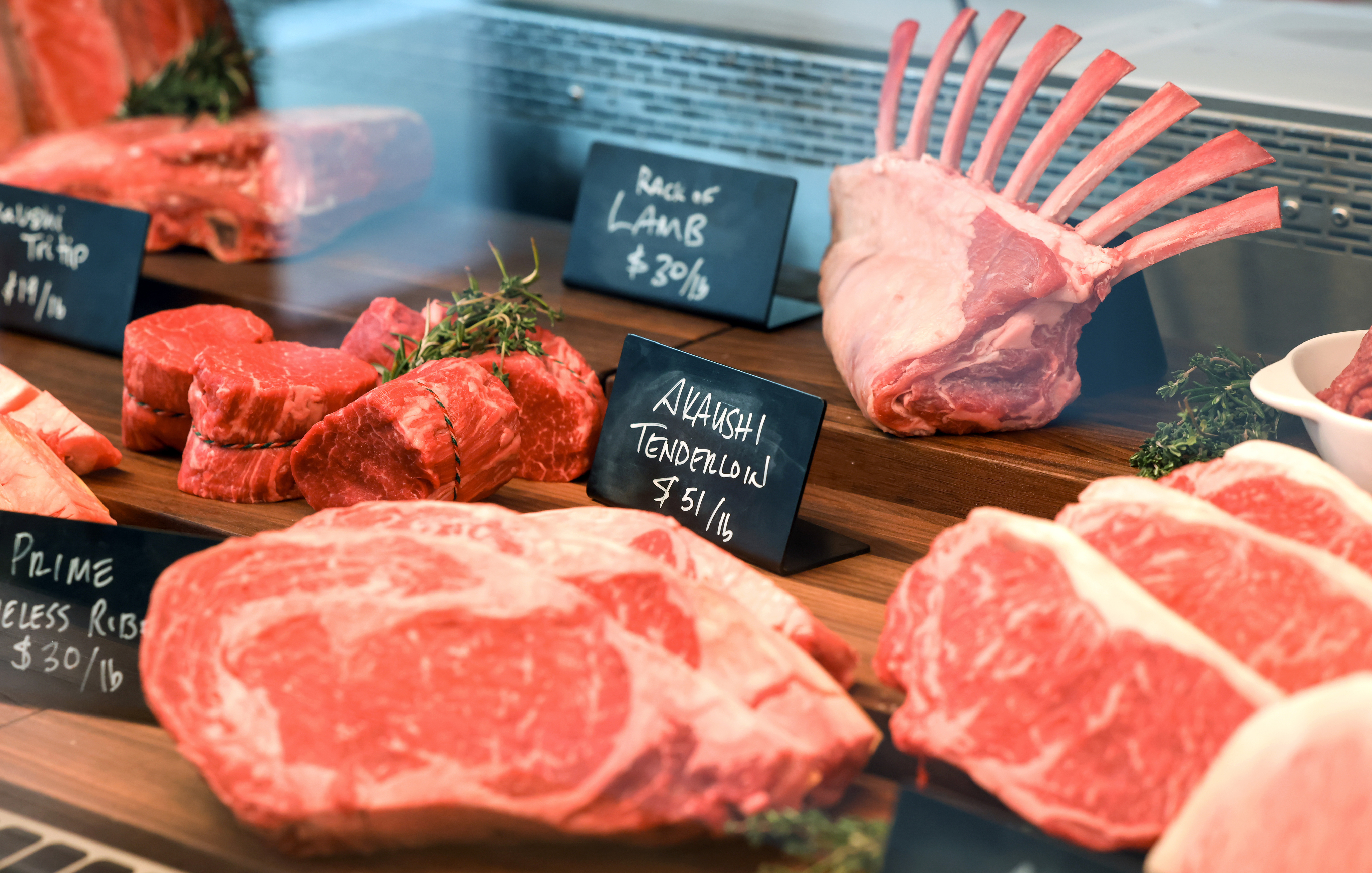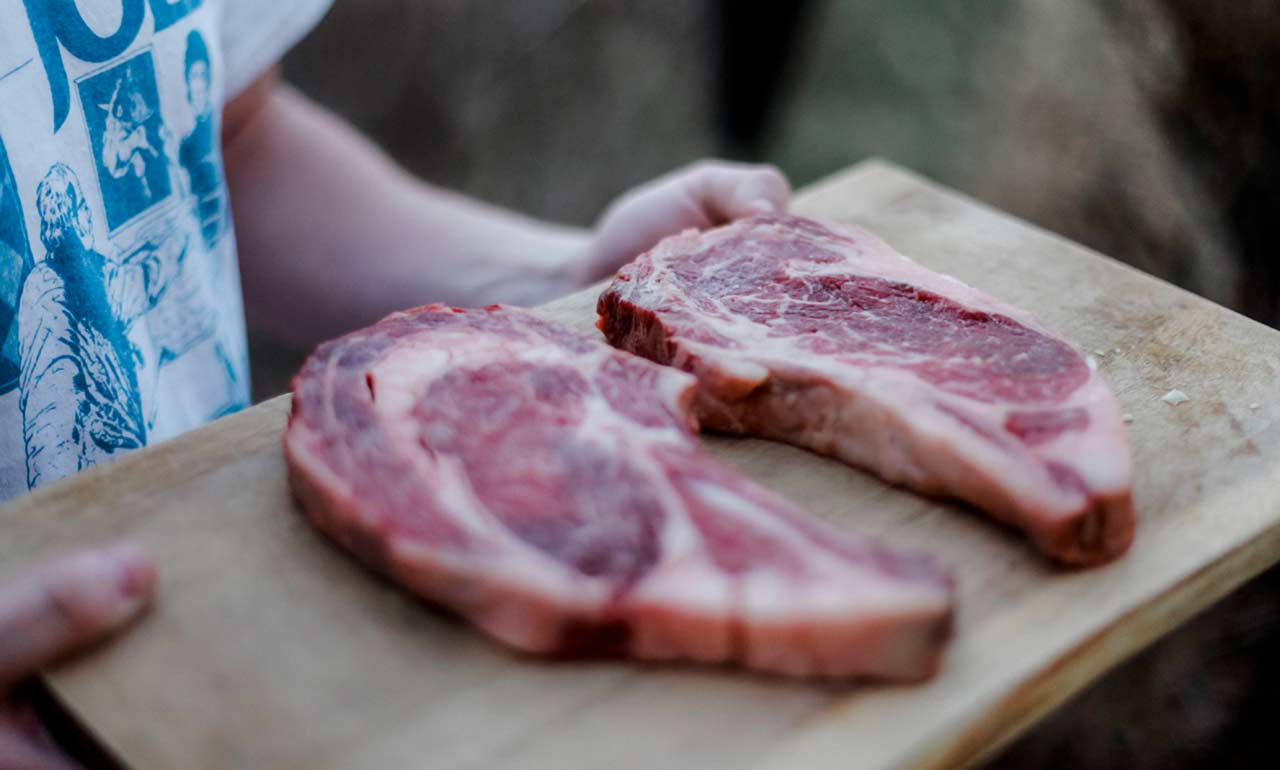Bagley Farms Meat Market: Bringing Quality to Your Table
Bagley Farms Meat Market: Bringing Quality to Your Table
Blog Article
Your Comprehensive Resource for Expert Tips on Browsing the Meat Market Scene and Making Enlightened Acquisitions
Navigating the globe of meat investing in can commonly feel like a complex puzzle, with various cuts, grades, and labels adding layers of details to the decision-making procedure. For those seeking to make informed options and boost their cooking experiences, recognizing the subtleties of the meat market scene is vital. From deciphering the difference between prime and option cuts to unwinding the enigmas behind numerous qualifications, a wealth of professional pointers waits for those eager to unravel the secrets of the butcher's domain. By mastering the art of selecting fresh, quality meat and learning to engage effectively with butchers, people can not just boost the tastes on their plate yet additionally make certain choices that line up with their preferences and values.
Understanding Various Cuts and Grades
When it involves buying meat, understanding the distinctions between numerous cuts and qualities is important for making educated options at the market. The cut of meat describes the specific muscular tissue team from which the meat is sourced, while the quality is a high quality classification based on variables like marbling, tenderness, and maturation of the animal. Prime quality meats have the greatest degree of marbling, making them tender, juicy, and tasty, however they also often tend to be more pricey. Choice quality meats are a little leaner with less marbling yet still offer top quality for a reduced cost factor. Select grade meats have the least marbling, making them leaner however possibly less tender. It's crucial to consider the cooking approach when selecting a cut and grade of meat-- as an example, well-marbled cuts like ribeye are terrific for barbecuing, while leaner cuts like sirloin may be much better matched for roasting or braising. By comprehending the distinctions in between grades and cuts, customers can make even more informed choices when purchasing meat.
Choosing Quality and fresh Meat
To guarantee optimal preference and safety and security in your meals, it is crucial to carefully pick fresh and top quality meat when buying at the market. When choosing fresh meat, look for cuts that have a vivid shade, firm appearance, and are damp but not slimed.
In addition to look, consider the resource of the meat. Select items from trustworthy vendors known for their high-quality requirements. Organic, grass-fed, or pasture-raised options might also show far better top quality meat. Looking for appropriate labeling, such as USDA qualifications or grades, can additionally assure you of the meat's high quality and safety and security. By being attentive in your selection process, you can appreciate tasty and secure dishes made from fresh, premium meat.
Decoding Labels and Certifications
Recognizing the tags and accreditations on meat products is important for making notified decisions about the quality and beginning of the meat you acquire. When navigating the meat market scene, it's important to look for tags such as "USDA Qualified Organic," which shows that the meat was created complying with strict organic criteria without the usage of synthetic pesticides, antibiotics, or hormonal agents.


Qualifications like "Animal Well-being Approved" or "Certified Humane" signify that the pets were elevated in gentle problems, with access to exterior areas and moral therapy. On the other hand, "Non-GMO Task Verified" indicates that the meat see this site originates from animals that were not fed genetically changed microorganisms. By understanding these qualifications and labels, customers can make more lasting and ethical options when buying meat products.
Involving With Butchers for Support
Making informed options about the meat you get can be further boosted by seeking support from experienced butchers who have valuable expertise find out here regarding different cuts, top quality, and sourcing practices. Butchers are knowledgeable experts who can provide insights right into the very best cuts of meat for certain recipes, recommend alternate choices based upon availability or budget plan, and deal suggestions on proper handling and storage to make the most of quality and taste.
Involving with butchers allows clients to ask concerns concerning the resource of the meat, consisting of whether it is in your area sourced, organic, grass-fed, or sustainably raised. By promoting a partnership with a relied on butcher, customers can gain a deeper understanding of the meat they buy, making sure that it straightens with their worths and preferences.
Additionally, butchers can share cooking pointers, dish suggestions, and even butcher special cuts to meet individual preferences. Their knowledge prolongs beyond just offering meat; they can help in dish preparation, part sizing, and supply referrals on corresponding components to produce tasty and all-round meals - Bagley Farms Meat Market. By leveraging the understanding and experience of butchers, consumers can make more enlightened decisions when navigating the meat market scene

Optimizing Value and Budgeting
When thinking about optimizing value and budgeting in the meat market, it is vital to evaluate the cost per offering and discover cost-effective cuts that still supply wonderful taste and high quality. By understanding the price per offering, consumers can make informed choices regarding which cuts of meat provide the most effective worth for their budget. One means to make best use of worth is to buy larger cuts of meat and portion them in the house, saving cash compared to pre-cut options. Furthermore, selecting much less prominent cuts, such as chuck or sirloin, can offer significant savings without endangering on taste or tenderness when prepared correctly.
An additional strategy for budget-conscious buyers is to capitalize on sales, discount rates, or mass buying alternatives. Buying wholesale and cold portions for later use can aid reduce general expenses per offering. It is also useful to construct a relationship with regional butchers Go Here or meat vendors, as they might supply special deals or discount rates to dedicated customers. By being mindful of expense, discovering different cuts, and leveraging discounts, consumers can stretch their meat budget plan without compromising top quality.
Conclusion
Finally, understanding the various cuts and qualities of meat, picking fresh and top quality items, deciphering labels and accreditations, seeking guidance from butchers, and taking full advantage of value and budgeting are important steps for navigating the meat market scene and making enlightened acquisitions. Bagley Farms Meat Market. By complying with these professional suggestions, consumers can make educated choices when buying meat and ensure they are getting the very best worth for their money
When it comes to acquiring meat, recognizing the differences between numerous cuts and qualities is vital for making informed choices at the market. The cut of meat refers to the details muscle mass group from which the meat is sourced, while the quality is a high quality designation based on factors like marbling, inflammation, and maturity of the pet. It's important to take into consideration the food preparation method when picking a cut and grade of meat-- for instance, well-marbled cuts like ribeye are wonderful for grilling, while leaner cuts like sirloin might be much better suited for toasting or braising.Understanding the tags and accreditations on meat items is crucial for making informed decisions concerning the high quality and origin of the meat you buy. When navigating the meat market scene, it's vital to look for labels such as "USDA Licensed Organic," which indicates that the meat was created following stringent natural requirements without the usage of synthetic chemicals, antibiotics, or hormonal agents.
Report this page